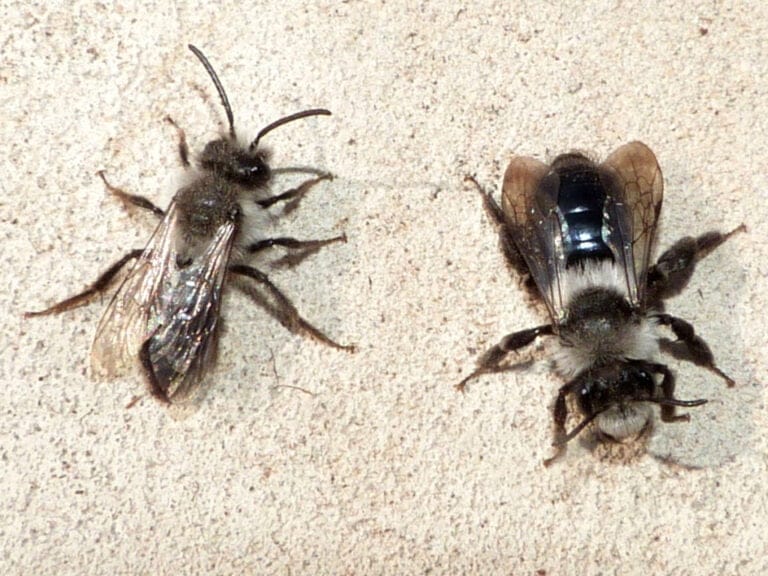Ashy Mining Bee Identification: A Complete Guide
The Ashy Mining Bee (Andrena cineraria) is a solitary bee with distinctive black and white coloring. These bees are important pollinators found in gardens, meadows, and woodland edges across southern and central England. By learning how to identify Ashy Mining Bees, you contribute to their conservation and enhance local biodiversity.
Behavior and Habitat of the Ashy Mining Bee
The Ashy Mining Bee is most active in the spring, from April to June. These bees are commonly found in gardens, meadows, and woodland edges, where they forage and nest. Unlike social bees, Ashy Mining Bees are solitary. Each female builds her own nest independently.
- Preferred Habitat: They prefer sunny, well-drained soils and are often seen in lawns, flower beds, or along footpaths.
- Nesting Sites: You will notice small mounds of soil, which mark the entrances to their ground-nesting burrows.
Nesting Habits of Andrena cineraria
The Ashy Mining Bee is part of the mining bee family, known for their burrowing behavior. The female digs a tunnel that branches into several chambers.
- Nesting Process: After laying eggs in each chamber, the female seals the entrance with soil. The larvae hatch and feed on the stored food. They pupate and remain underground through the winter. They emerge as adult bees the next spring.
- Solitary but Close Nesting: Although solitary, Ashy Mining Bees often nest close to each other. This gives the appearance of a small mining bee village.
These bees are essential pollinators and do not pose any threat to humans or pets. They help pollinate flowers, fruit trees, and wild plants, promoting local biodiversity.
How to Identify the Ashy Mining Bee
Ashy Mining Bee Identification is simple due to their unique appearance. Females are about 10-13 mm long, while males are slightly smaller.
- Size: Females are larger than males.
- Coloration: The Ashy Mining Bee has a black body with pale grey or white bands of hair across the thorax and the first segment of the abdomen. This black and white coloring makes them easy to spot in gardens and meadows.
- Sex Differences: Males are more slender with longer antennae.
When identifying Andrena cineraria, look for their characteristic burrows and black and white body in sunny, well-drained soil areas.
Encouraging Ashy Mining Bees in Your Garden
Supporting Ashy Mining Bees in your garden can help improve pollination and promote a healthy ecosystem.
- Plant Variety: Grow dandelions, buttercups, and other early-blooming plants that provide nectar and pollen in early spring.
- Avoid Pesticides: Avoid using harmful chemicals that may affect these bees and other pollinators.
- Provide Nesting Spaces: Keep areas of bare, well-drained soil for ground-nesting bees like the Ashy Mining Bee.
Creating a bee-friendly environment helps solitary bees thrive, supports local biodiversity, and promotes pollination.
To learn more about protecting bees and pollinators in your area, visit the Pollinator Partnership for tips and resources.
Creating a bug hotel is another great way to provide shelter for ground-nesting bees and other beneficial insects. Learn how to make your own by checking out our guide on how to make a bug hotel.





